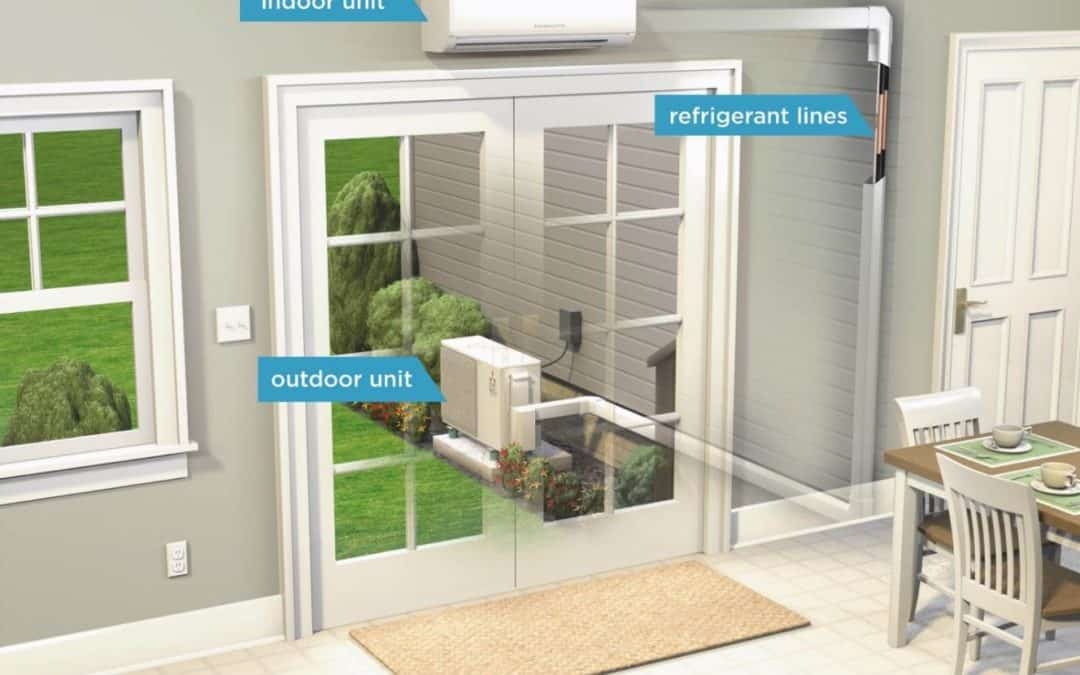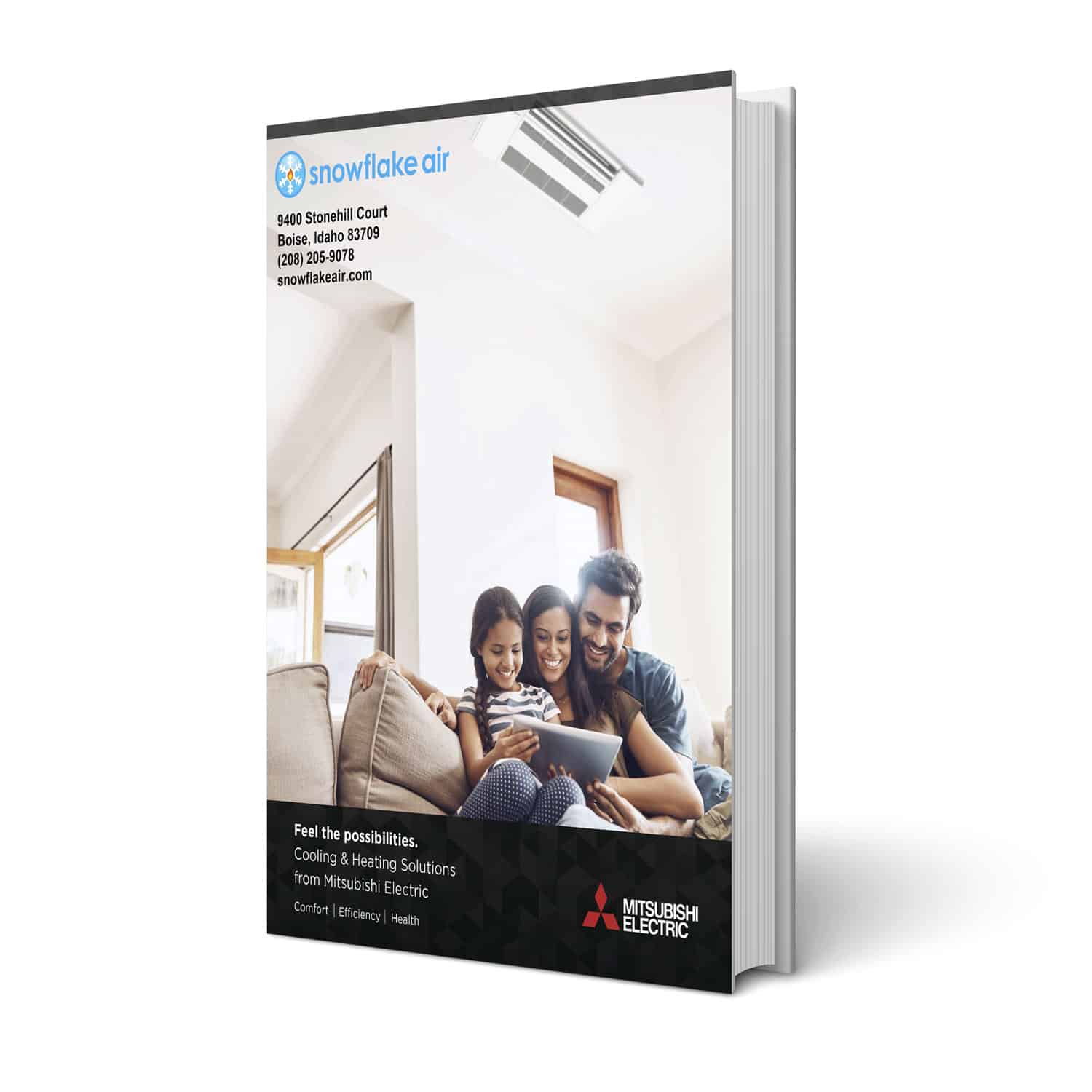As ductless mini splits become more and more popular here in Southwest Idaho, we get more and more questions about how they work.
That’s understandable: After all, part of the reason people love these systems is the technology behind it is different than what they’re used to. That difference is why they work so much better.
Read More: How Do Mini Splits Work?
But, that also causes some confusion about these setups. So, in this article, we’re clearing up some misconceptions about how mini splits both heat and cool a home. In particular, we’re addressing the fact that yes: As you’ve probably heard, these systems almost never turn off. But, that doesn’t mean they’re loud, obtrusive, and make your bills skyrocket.
Instead, the opposite is true. We’ll explain how.
Does a Mini Split Run All the Time?
A mini split does not turn on and off a few times every hour like conventional central air conditioning. Instead, it runs almost constantly. But, it does so silently and without using much electricity. This process keeps your bills low and your home more comfortable.
To understand how this works, we’ll look at:
- How Ductless Heating and Cooling Works
- Ductless Vs. Central Air Conditioning
- Ductless Vs. Furnaces and Radiators
- Energy Efficiency and Saving Money
How Ductless Heating and Cooling Works
A ductless heating and cooling system uses a heat pump to either draw warmth from outside to heat your home in the winter. Or, it gets rid of heat from your home. But, they don’t move air throughout the house. Nor do mini splits bring air from outside into your house.
Inside, you have air handlers mounted in the zones or rooms that you want to treat. They circulate the air. Coolant runs in a closed loop between the two to move the heat or cooled air.

In the case of mini splits running all the time, the air handlers are the key components. They use inverter technology so that they can either run at full capacity or in a low-power mode.
That means that, yes, they do run almost all the time. They don’t cycle on and off to adjust the temperature as it drifts, which is what conventional AC does. Instead, it spends most of the time in that low-power mode.
This way, it uses only a tiny amount of power to maintain the temperature you want instead of using big bursts to cool things down again and again.
Read More: How Much Does A Mini Split Cost for Homes in Boise, ID and Valley County?
Ductless Vs. Central Air Conditioning
So, how does this process compare to central air? Well, for starters, you get better humidity control. Dehumidification is an integral part of the air conditioning process.
When the air gets drier, you feel cooler and more comfortable. Otherwise, humidity wraps around you like a warm blanket. When your body sweats to lower your temperature, that sweat can’t evaporate because it’s trapped on your skin.
With central air, the system will only dehumidify when it’s running. But, these systems usually turn on and off a few times every hour. Then, they typically run for maybe 15 minutes at a stretch. The rest of the time, the humidity is rising.
By contrast, a ductless mini split dehumidifies all the time — even when it’s in low-power mode. And, since that’s almost all the time, that’s nearly constant dehumidification. You feel more comfortable as a result, and the room stays a little cooler.

Ductless Vs. Furnaces and Radiators
Next, there’s the question of how the low-power mode stacks up against conventional heaters. In this case, your mini split will give you better, even temperatures all the time. It’s even more noticeable with heat, and especially if you have a radiator.
Once again, your air handler spends most of the time in low-power mode. A forced-air furnace or radiator turns on and off when the temperature dips.
That means you don’t get more heat until your home is a few degrees colder than you want. Then, the system pushes it up a few degrees higher than the setting on your thermostat.
It happens on purpose. The system has to course-correct over and over again, and so it overshoots so that you stay warm longer before it gets too cold again.
With an air handler, however, you maintain the temperature you want all the time. There’s no fluctuation of five or eight degrees over an hour.
And we’ll make one other point: People like radiator heat because it doesn’t dry out the air nearly as much as a furnace with ductwork and vents. When you have steam heat, it adds moisture to the air.
The problem in winter is that cold air is naturally much less humid than warm air. So, winter air is already kind of dry. Then, your furnace is taking that cold, already-dry air, and adding heat but no moisture. The result is unnaturally dry air.
Radiators at least add water vapor, so it’s more comfortable. But, they take a long time to heat a room, especially a big one. That’s why people complain about hot and cold spots.
However, a mini split uses sensors and small fans to detect those cold spots and treat them before you even notice they’re there.
Read Real Case Studies Of Mini Split Installations In Boise Metro and Valley County
Energy Efficiency and Saving Money
Surprisingly, this uses much less energy than a system that turns on and off all the time. For starters, this is possible, thanks to the heat pump.
A mini split doesn’t have to generate heat in the winter like a furnace. Nor does it need blowers and fans for forced-air circulation throughout the house.
Instead, the heat transfer process merely moves heat from one place to the other. The heat pump just needs a tiny bit of electricity to get the process started. And, since it works in low-power mode most of the time, it doesn’t need much.
As a result, just about every heat pump system on the market — and certainly every Mitsubishi system we sell here at Snowflake — has an Energy Star certification.

That means it works just as well — or better! — than comparable models. But, it uses much less energy to do it. And, since these systems meet those requirements, you’re often eligible for tax credits and rebates.
Both the federal government and Idaho Power offer financial incentives for homeowners to use energy-efficient appliances. Since these fit the bill, you can get money back upfront on the cost of a new system. Then, you’ll save money each month on your utility bills.
Read More: Rebates and Financing Options For Treasure Valley Heat Pump and Mini Split Installations
Ductless Mini Split Installations in Boise, ID and Valley County
Snowflake Air is a certified Diamond Dealer for Mitsubishi installations and service. And we’re spreading the word about installing ductless mini splits across Boise, ID, Meridian, Boise, Eagle, and Kuna. We also work in Cascade, Donnelley, McCall, and homes and businesses in other Valley County areas.
If you’d like to learn more about how these work, and if they’re a good fit for your home, call or email us today for a free consultation.



![Do Mini Splits Run All the Time? [Ductless Heating and Cooling]](https://snowflakeair.com/wp-content/uploads/2020/07/mitsubishi-ductless-300x250-2.png)

Trackbacks/Pingbacks